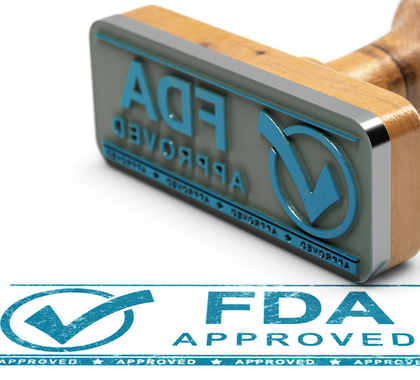According to its mission statement, the Food and Drug Administration (FDA) is responsible for “advancing public health” by providing oversight to the drug development process. FDA has been tasked with helping to ensure there are “effective, safer, and more affordable” health products in America’s market, which helps individuals “maintain and improve their health.”
In recent years, FDA has become increasingly more involved in “protecting the public health by ensuring the safety, efficacy, and security” of numerous products, including prescription medications, tobacco, and food and cosmetic products. In many cases, the agency has proven itself to be exceptionally biased against harm reduction devices and services, while at other times, FDA has failed to protect the public from potentially dangerous substances. Such is the case with OxyContin, one of the most important contributors to America’s current opioid epidemic.
In countless instances, FDA has been too stringent and inflexible. In others, it has seemingly been ignorant of the dangers of particular drugs, leading many (this writer included) to wonder: Does FDA have any clue what it’s doing?
Today, America is facing one of the worst drug crises in its history. According to the U.S. Department of Health and Human Services, in more than 42,000 drug overdose deaths in 2016 in the United States, opioids were involved. Further, an estimated 11.5 million Americans misused prescription pills, creating $504 billion in economic costs.
Part of this problem can be traced back to the FDA and its lackluster approval process of prescription opioids, beginning with OxyContin, a time-released painkiller that contains the potent opiate oxycodone.
During a 2002 congressional hearing, Dr. John K. Jenkins, then director of FDA’s Office of New Drugs at the Center for Drug Evaluation and Research, stated OxyContin was approved “for treatment of moderate to severe pain based on two clinical trials that demonstrated that it was safe and effective.” In the same hearing, U.S. Sen. Susan Collins (R-ME) noted “admissions to substance abuse treatments for opiates, including OxyContin” had increased in Maine by 500 percent since 1995. It was estimated that in 2016, on average, one person died every day in Maine because of overdoses.
Despite some early warnings, the FDA permitted the use of a “modified risk” disclaimer in marketing OxyContin. That included a disclaimer noting “delayed absorption as provided by OxyContin tablets, is believed to reduce the abuse liability of a drug,” even though no clinical trials had been conducted to support this assertion. The sentence was “added to the label at FDA’s suggestion.”
The narrowness of FDA’s approval process for prescription opiates has left a terrible stain on America. The abuse of prescription pills, heroin, and fentanyl drugs have all risen in part because prescription opioid use has been increasing.
According to the American Society of Addiction Medicine, in 2016 “four in five new heroin users started out misusing prescription pain killers.” Similarly, the Centers for Disease Control and Prevention notes in 2015, prescriptions for opioids remained “approximately three times as high as in 1999.”
Even after numerous hearings and news reports on the dangers of prescription drug abuse, FDA has approved more time-released opioids, such as Zohydro, a powerful painkiller similar to OxyContin. A total of 28 governors have called for the FDA to rescind its decision.
It’s important to note that, while the FDA has shown it’s willing to allow powerful prescription painkillers to become one of the few relief methods available for chronic pain, it has at the same time applied a narrow standard to other products that could save lives. For instance, FDA has yet to allow many e-cigarette, heat-not-burn, and snus products to be marketed as less harmful alternatives to combustible cigarettes — even though ample evidence shows they are.
In 2016, FDA deemed these alternatives to tobacco cigarettes must be regulated under its authority, and FDA has since treated them as though they are tobacco cigarettes. Under FDA’s rules, manufacturers must go through arduous, expensive, and unnecessary pre-market tobacco applications. In order to submit a modified risk claim (a proclamation that e-cigarettes are less harmful than tobacco cigarettes) manufacturers must provide all available evidence—a standard that’s seemingly much higher than the one that was fulfilled when two studies provided to FDA on OxyContin tablets led to that product’s approval.
Multiple studies have already proven e-cigarettes provide significant health gains. In 2015, Public Health England found e-cigarette use to be “around 95% safer than smoking.” The Tobacco Advisory Group of the Royal College of Physicians stated in 2016 health hazards from electronic cigarette use are “unlikely to exceed 5 percent of the harm from smoking tobacco.” In 2018, the American Cancer Society noted that based off the currently available evidence, “using current generation e-cigarettes is less harmful than smoking cigarettes.”
Despite the overwhelming evidence, FDA has yet to approve any modified risk tobacco products, effectively blocking any innovation in this growing and important market, which helps Americans improve their health.
From its cheerleader stance on prescription opioids to its inaction on tobacco harm reduction, there is ample evidence showing FDA is not advancing public health successfully and is dire need of reform.
[Originally Published at The Hill]





